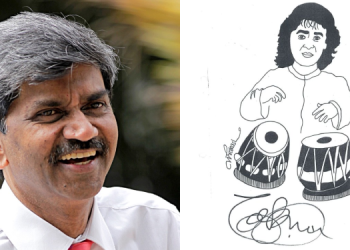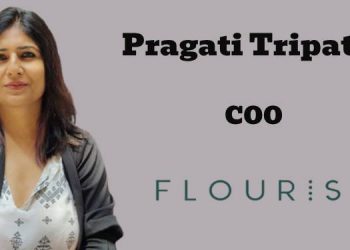Arjun M Ranga, Managing Partner, NR Group & Managing Director, Cycle Pure, believes that the pandemic has changed consumer buying behaviour.
In conversation with Medianews4u.com at the company’s office in Bengaluru, Ranga also spoke about the brand’s market share, discovering the D2C route and opportunities therein, continuing faith in television spends, increased digital spends, the festive period, eco-friendly initiatives and more.
NR Group was reported to have clocked a turnover of Rs 1,700 crore with a presence in 75 countries, selling 12 billion agarbathies (in 2020) worth Rs 1,000 crore. Articles mention a 16pc share. How is this growing?
We sell about 12 billion incense sticks. According to Nielsen, our market share is at 15 to 16pc of the organised sector, which is around Rs.7,000 to 8000 crore. We want to increase our market share by 25 to 30pc in the next three years. We are a South-based brand and to increase our market share, we are going to predominantly develop the North, East, and West markets, which are very critical for us. We are aiming to increase the distribution reach in these regions and are also planning to bring in more product innovation.
Within NR Group, you also offer functional fragrance brands Lia and IRIS Home Fragrances, under Ripple Fragrances. How big is that business and how do you see it growing?
The functional fragrance brands have just started to grow for us, so there are no figures to report on that. The home fragrance market in India is supposedly growing at 25pc, but it is a very small and emerging category. There is day-to-day expansion happening in that sector with players like Godrej and others coming into the foray. The home fragrance category is largely an urban category. We believe that in the next five years the category is poised for significant growth and will also expand to Tier 2 and Tier 3 cities. With our distribution reach, we believe we can establish ourselves strongly in urban markets as well.
As mentioned earlier, product innovation is the key strategy. We have a product called Stop-O Power Bag (a gel-based power bag bath freshener), and we are the only players doing it in that format, along with Godrej; none of the other players have created it. It is an in-house innovation that will be used to propel significant growth.
From the marketing side, apart from direct marketing through our distribution networks, which is our strength, we also see the D2C segment expanding with online becoming a key differentiator especially for our home fragrance segment IRIS. We have now realised that taking the online route aggressively is also going to contribute to growth.
The festive season (leading up to Diwali) is around the corner. Does the category (agarbathis and dhoops) see a lift during the festive period? If yes, by how much?
As a corollary, do you spike marketing spend during the festive season? How much of the marketing and media spend is concentrated at this time of the year?
Typically, the category in itself has skewed advertising spending during the festive season. For us, it is not the situation as we advertise throughout the year. As a bigger brand, even our sales don’t spike as much as they do for our competitors during the festive season.
Nonetheless, the festive season is very important. I am a strong believer in traditional television advertising. We will continue to advertise on television, which accounts for 90pc of our media spend. But, unlike the last two years, this year we are increasing the BTL spending as well. Another new initiative is, we have invested in digital marketing. Even though it is not highly significant in numbers, it is a lot more than we ever did. We believe that the digital is also a place we have to be present in.
How has the pooja items portfolio launched in 2020 fared? How much does it contribute?
It is faring really well as we are the only branded player in the segment. We are seeing a shift from consumers looking at brands versus unbranded products. Though sales numbers are not very significant right now, the category has doubled in two years. The category is growing very rapidly.
In May 2022 you launched Pushkarini Range made from flowers offered at temples and Om Shanthi Dhuno. What has the initial response been to both?
Acceptance has been really good for Om Shanthi Dhuno and the actual response will be seen in October during the Durga Puja season. The Pushkarini range is aimed at consumers all over the country. It has also received good acceptance. We need to see how it picks up going forward.
How much does the South contribute to agarbathis as a category and Cycle Pure in particular? Which are the fastest growing markets (for industry and for Cycle)?
Typically, the consumption of agarbatti as a category depends on the population. The bigger the state, the higher the consumption percentage. For Cycle, South India is predominantly the largest contributor.
NR Group is credited with being among the first to move from tin packaging. Today, we have powder body wash introduced in pouches by Godrej. You are already a carbon neutral agarbatti manufacturer. Tell us briefly about NR’s environment-related vision, initiatives and plans. In your category, does being environment-friendly guide consumer choice?
We were the first brand to move away from tin packaging in 1952. Usually, agarbatti is used while praying for the well-being of their loved ones. As a brand, we personify hope and we said that we should do things that are right for our next generation. One significant issue is about being eco-friendly and caring for the environment. The best way to do it is to ensure that during the agarbatti manufacturing process, every agarbatti manufacturer completely offsets the carbon footprint, which is called zero carbon manufacturing. Each and every agarbatti produced by Cycle is carbon neutral.
As a brand, our vision is to be sustainable. We need to care for mother Earth and need to be ahead of regulations. We are also planning to completely offset our plastic footprint as well, and we will be the first company to do that before 2025.
Consumers are not yet clear about consumer-friendly brands as there is a lack of awareness for a category like ours. It is increasing year-on-year.
Are there any broad trends in the incense sticks and dhoops category? How have you witnessed consumer choices evolve over the years?
The broadest trend is that during the pandemic period, people went back to traditional fragrances like sambrani and dhoop. We saw a conversion of unbranded to branded choice during the pandemic period, and the trend is still continuing, and people are still sticking to traditional fragrances.
Consumers’ buying patterns have changed. The amount of time that they spend in the retail outlet has reduced. They want to go, buy products that they know and quickly exit the store. Earlier, they spent a lot of time in the stores browsing and experimenting with the products, which has reduced significantly. There has been an increase in the purchasing of bulk packaging.
Your foundation runs a school for visually challenged girl children, also runs a community development centre for women who are differently abled. How many such lives has the foundation touched so far?
NR Foundation has two full-time initiatives. We run a boarding school for visually challenged girl children from 1st to 10th standard, which is completely funded by us. The second initiative is we have a community development centre which largely focuses on women who are differently abled, and we identify job opportunities for them, upskill them and place them for jobs.
Apart from that, we take up projects. One project that we took up for seven years was ‘Project Prerepana’, where we did upliftment programmes for slum children and women who faced challenges of addiction (either the spouse or women itself). It touched close to 2,000 families.

















